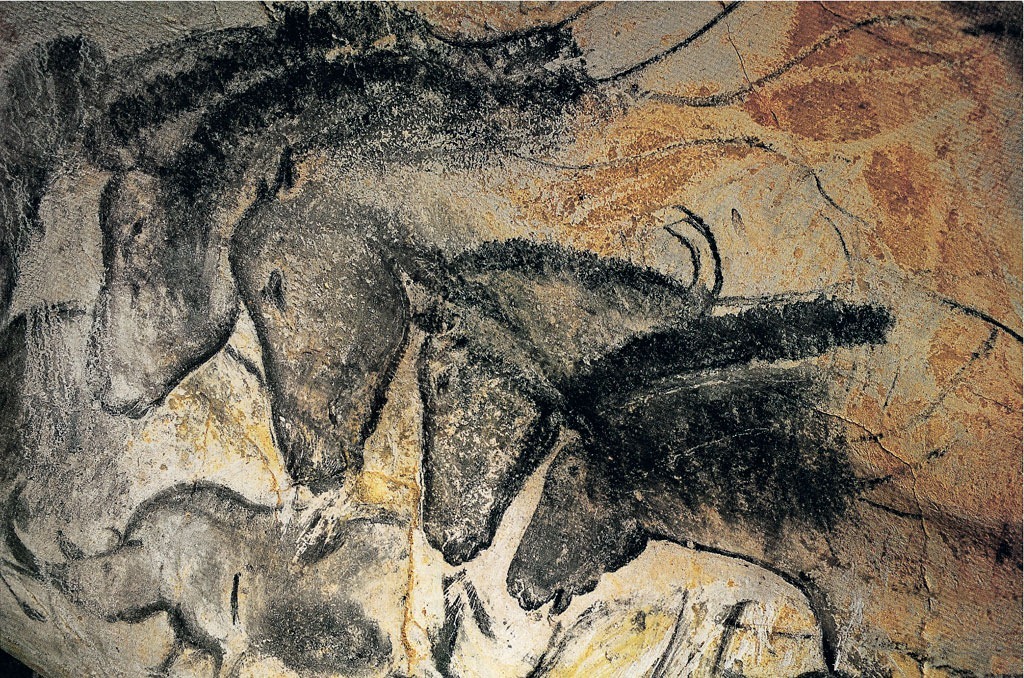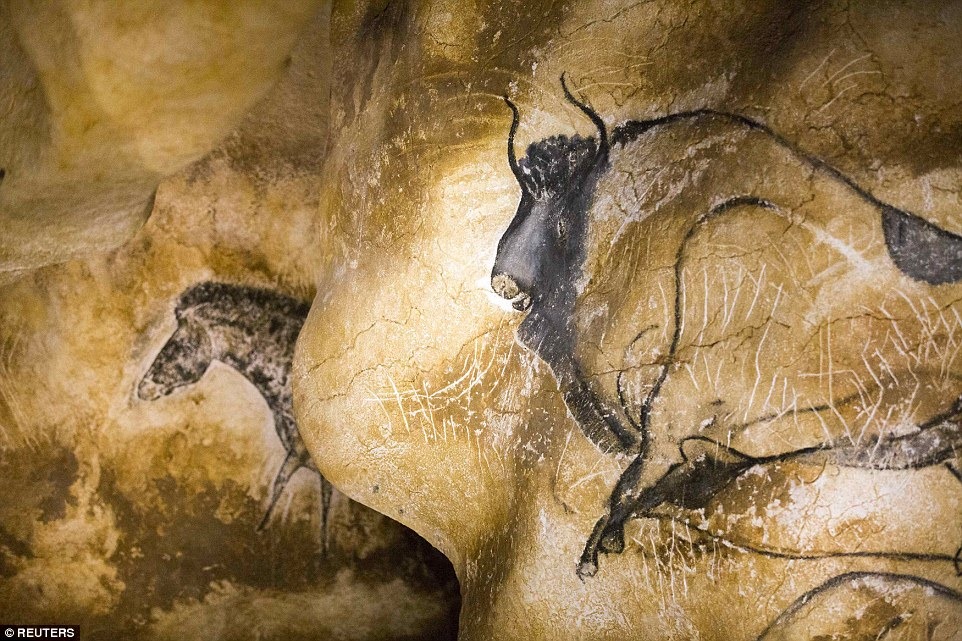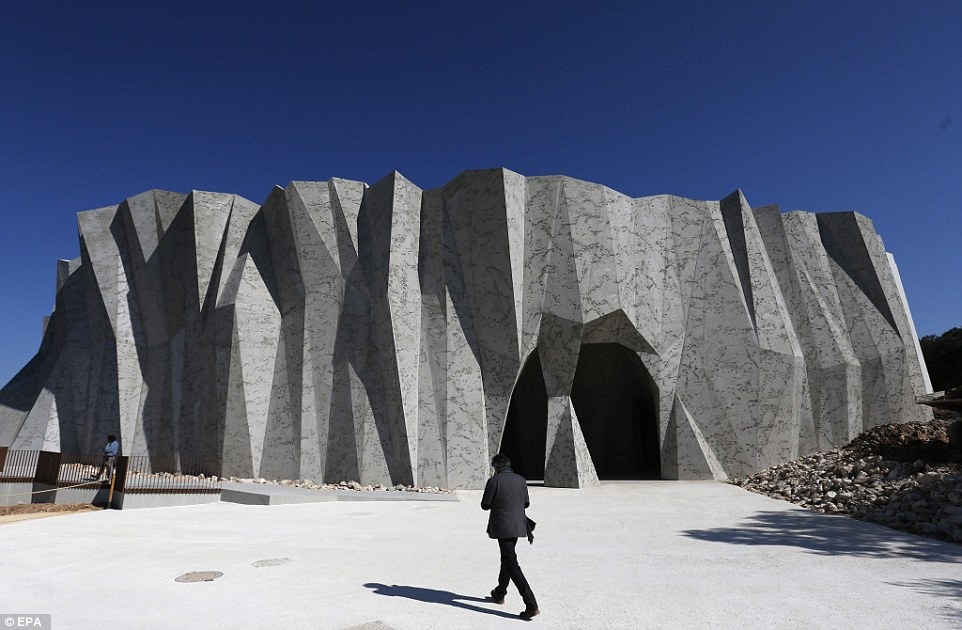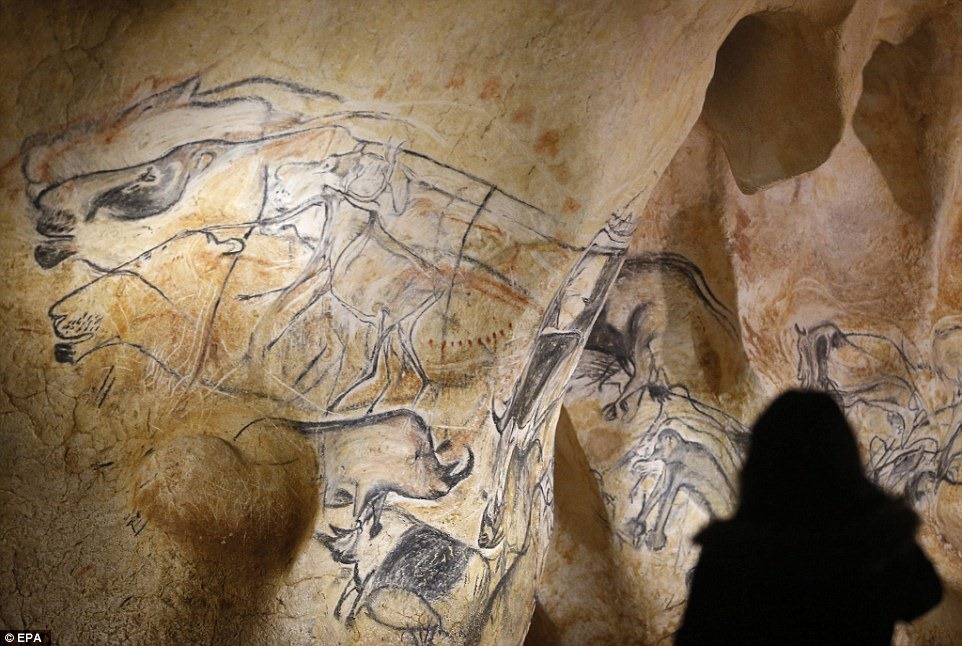Of all prehistoric cave paintings discovered in different parts of the world, the ones at Chauvet-Pont-d'Arc Cave in southern France deserve special mention. These paintings are significant for two factors: firstly, they exhibit exceptional aesthetic quality previously unseen in prehistoric paintings, such as the skillful use of shading, combinations of paint and engraving, anatomical precision, three-dimensionality and movement. Secondly, they are of great age. Radio carbon dating has put them in the Aurignacian period, approximately 30,000 to 32,000 years ago, making them the earliest-known and best-preserved examples of figurative drawings in the world.
The cave is located in a limestone plateau along the bank of the river Ardeche, near the commune of Vallon-Pont-d'Arc. Until its discovery in 1994, the cave had remained sealed off by a rock fall that occurred approximately 20,000 years ago. Chauvet is one of the few prehistoric painted caves that was found preserved and intact, right down to the footprints of animals and humans.

When the cave was discovered, the content of the imagery and the artistic techniques used to create them surprised archeologists and anthropologists. Usually most of the animals depicted in Stone Age art are game animals that were hunted for food. At Chauvet, however, the majority of animals represented are predatory such as bear, cave lion, rhino, and hyenas. Besides, the paintings were executed so skillfully that it has “forced us to abandon the prevailing view that 'early art was naive art'.”
Website www.visual-arts-cork.com writes:
Chauvet's Stone Age painters employed more sophisticated techniques of drawing, shading, perspective and composition in their murals than was previously expected, at least for the period in question. As a result, Chauvet contains numerous dynamic and powerful compositions consisting of multiple images skillfully executed and arranged to fit in with the contours of the cave chambers. There is also some evidence to suggest that a significant quantity of the charcoal drawings were painted by a single, master artist.
From the Wikipedia article on the cave:
The artists who produced these unique paintings used techniques rarely found in other cave art. Many of the paintings appear to have been made only after the walls were scraped clear of debris and concretions, leaving a smoother and noticeably lighter area upon which the artists worked. Similarly, a three-dimensional quality and the suggestion of movement are achieved by incising or etching around the outlines of certain figures. The art is also exceptional for its time for including "scenes", e.g., animals interacting with each other; a pair of woolly rhinoceroses, for example, are seen butting horns in an apparent contest for territory or mating rights.
In addition to the paintings and other human evidence, the cave also contains fossilized remains, prints, and markings from a variety of animals, some of which are now extinct. The soft, clay-like floor of the cave retains the paw prints of cave bears along with large, rounded depressions that are believed to be the "nests" where the bears slept.
As soon as the cave was discovered, the French authorities closed it off to visitors, to avoid a repeat of what happened at Lascaux Caves, which was damaged beyond repair after it was opened to the public. To appease tourists, a full-scale replica of the cave's most important features were produced a few kilometers away in a large concrete hanger in 2015. Built at the cost of $55 million, the replica cave features concrete walls, over which thousand prehistoric paintings were reproduced. Even the smell, humidity and temperature of the faux cave is recreated to make the replica as authentic as possible.







The building that houses the replica of the Chauvet cave.






Sources: Wikipedia / www.visual-arts-cork.com / archeologie.culture.fr / UNESCO / bradshawfoundation.com / The Local



Comments
Post a Comment